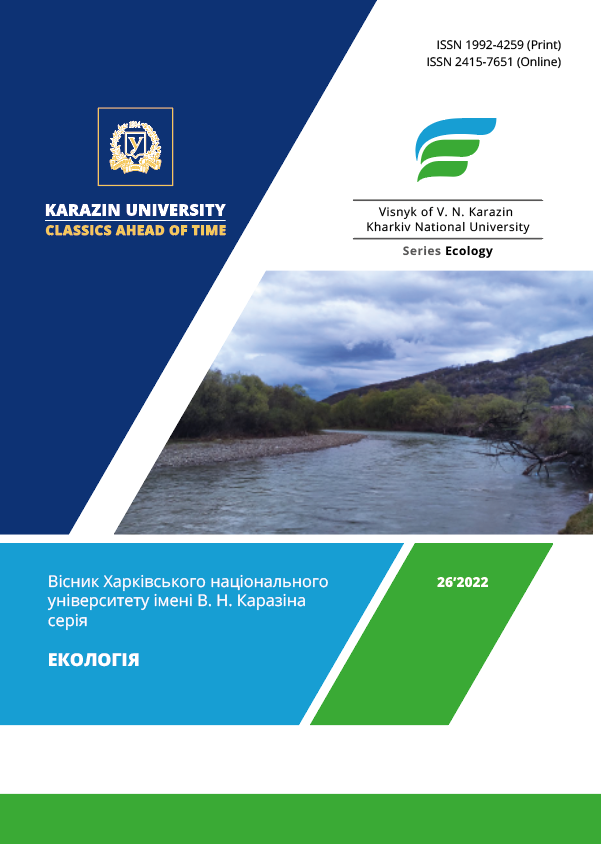Social and ecological prerequisites for the development of innovative nature management in the communities in Lviv region
Abstract
Purpose. Based on the analysis of socio-ecological conditions for the development of innovative nature management in the communities in Lviv region, to determine the main factors of innovative industrial production.
Methods. Analysis, synthesis, comparison.
Results. The concept of "industrial nature management in the community" is covered. We described the socio-ecological conditions for the development of innovative nature management and the main factors of innovative industrial nature management in modern decentralization within the newly created territorial communities are as follows: technology, legislation in the field of innovation, demand for innovative products, information and investment resources, highly skilled labor, efficiency of management.. Innovative activity within the enterprises of Lviv region and the state of the technological structure of industrial production in the region are characterized. Attention is paid to the possibility of structural restructuring of industrial nature management.The peculiarities of the development of innovative nature management within the Lviv region, the mechanisms of stimulating investment and innovative development of territorial communities are highlighted. The concept of "industrial park" is considered, as well as the concept of creating industrial parks. The functional purpose of nine industrial parks, which are planned to be created within the territory of Lviv region, is described. The industrial zoning of the region is highlighted and the main industrial centers within them are characterized.
Conclusions. Structural restructuring of industrial nature management should be based on optimizing the use of existing in the community natural resource, socio-economic, cultural and historical potentials, optimizing the directions and scale of nature management. At the same time, the least environmentally harmful industries deserve the priority development.
Downloads
References
Vasilenko, V. O., & Shmatko, V. G. (2003). Innovation Management. Kyiv: CUL, Phoenix. (in Ukraini-an).
Zagvoyskaya, L. D. (2010). Eco-innovations in business strategies under conditions of ecological globalization. Marketing innovations and innovations in marketing: collection of abstracts of the Fourth International Scientific and Practical Conference, September 29-October 1, 2010. Sumy: Sumy State University, 87-89. (in Ukrainian).
Law of Ukraine “On Amendments to the Law of Ukraine“ On Industrial Parks ”and some other legislative acts of Ukraine on attracting investments into the industrial sector of the economy by stimulating the creation of industrial parks. (2021). Information of the Verkhovna Rada (VVR), (49). (in Ukrainian).
Zakharchenko, V. I. (2004). Transformation processes in industrial territorial systems of Ukraine. Vinnytsia: Hypanis. (in Ukrainian).
Kravtsiv, V.S. (Ed.). (2013), Carpathian region: current issues and prospects for development. Monograph in 8 volumes . National Academy of Sciences of Ukraine. Institute of Regional Research. Lviv, 5. Small towns / resp. ed. L.T. Shevchuk. (in Ukrainian).
Maksymenko, N. (2012). Landscape planning as a method of territory’s ecological acсomplishment. Problems of Continuous Geographical Education and Cartography, 16, 65-68. Retrieved from https://periodicals.karazin.ua/pbgok/article/view/4112/3698 (In Ukrainian).
Maksymenko, N. V. (2017). Landscape and ecological planning: theory and practice. Monograph. Kharkiv: V.N.Karazin KhNU.. (in Ukrainian).
Pidgrushny, G. P. (2009). Industry and regional development of Ukraine. Kyiv. Institute of Geography of the National Academy of Sciences of Ukraine. (in Ukrainian).
Tsaryk, L., Yankovska, L., Tsaryk, P., Novytska, S.,& Kuzyk, I. (2020).Geoecological problems of de-centralization (on Ternopol region materials). Journal of Geology, Geography and Geoecology,. 29(1). 196-205. https://doi,org/10.15421/112018
Yatsentiuk, Yu. V. (2015). Urban landscape technical systems (on the example of the city of Vinnytsia). Vinnytsia Retrieved from https://library.vspu.edu.ua/polki/akredit/kaf_3/yasentuk2.pdf (in Ukrainian).
Karpishchenko, T. O., Karpishchenko, O. I., & Ilyashenko, K. V. (2002). Scientific and methodical bases of improvement of the economic mechanism of development of ecological and innovative activity. Mechanism of economic regulation, economics of nature management and organization of production, (1-2), 46–54. (in Ukrainian).
Lisovsky, S. A. (2009). Society and nature: balance of interests in Ukraine/SA Lisovsky. Institute of Geography of the National Academy of Sciences of Ukraine. Kyiv. (in Ukrainian).
Nazaruk M. M. (Ed.). (2018). Lviv region: natural conditions and resources. Lviv: Staryi Lev Publishing House. (in Ukrainian).
Amosha, O. I., Kharazishvili, Y. M., Lyashenko, V. I. … Kolesnikova, G.V. (2018). Modernization of the economy of industrial regions of Ukraine in terms of decentralization of management: a monograph/ National Academy of Sciences of Ukraine, Institute of Industrial Economics. Kyiv. Re-trieved from https://iie.org.ua/wp-content/uploads/2019/08/mono_2018_amosha_kharazishvili_liashenko_compressed.pdf (in Ukraini-an).
Stadnytsky, Y. I., Bakushevich, I. V., & Stadnytska, Y. Y. (2011).Spatial economics. Ternopil: TISIT.
Strategy of development of Lviv region for the period of 2021-2027. Retrieved from https://www.minregion.gov.ua/napryamki-diyalnosti/derzhavna-rehional-na-polityka/strategichne-planuvannya-regionalnogo- rozvitku / strategichne-planuvannya-regionalnogo-rozvytku-na-period-do-2027-roku / regionalni-strategiyi-rozvytku-na-period-do-2027-roku / strategiya-rozvytku-lvivskoyi-oblasti-na-period-2021- 2027-rokiv / (in Ukrainian).
Shkilnyak, M. M., Ovsyanyuk-Berdadina, O. F., Krysko, J. L, & Demkiv, I. O. (2017). Management: Textbook. Ternopil: Krok. (in Ukrainian).
Copyright (c) 2022 Nazaruk M. M., Halianta L. A.

This work is licensed under a Creative Commons Attribution 4.0 International License.
Authors who publish with this journal agree to the following terms:
- Authors retain copyright and grant the journal right of first publication of this work under the terms of a license Creative Commons Attribution License 4.0 International (CC BY 4.0).
- Authors are able to enter into separate, additional contractual arrangements for the non-exclusive distribution of the journal's published version of the work (e.g., post it to an institutional repository or publish it in a book), with an acknowledgement of its initial publication in this journal.
- Authors are permitted and encouraged to post their work online (e.g., in institutional repositories or on their website) prior to and during the submission process, as it can lead to productive exchanges, as well as earlier and greater citation of published work.





